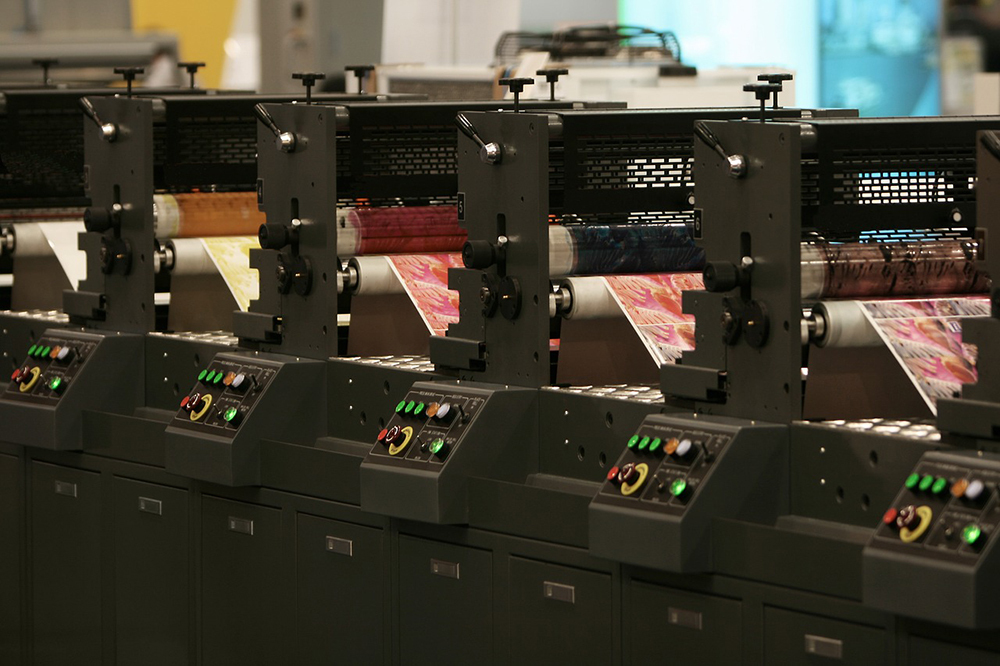If you love reading print books, you’ve likely fallen hard for a pretty book: it caught your eye and you just had to pick it up. We’ve all been there. Booksellers, who can see hundreds of books on a daily basis, are especially susceptible to pretty books and the urge to take them home. As a former bookseller, I can testify that prettiness does create more goodwill toward a book—and makes it more likely that a reader will stop and read the synopsis. The following list is a roundup of book cover embellishments that excite booksellers (and one that doesn’t).
Touchy-Feely Covers: Emboss and Deboss
Embossing makes those bumps on the cover—usually on the title and the author’s name—that make you run your finger over the letters. An embossed cover is made with a specialized plate, known as a die, that the cover paper is rolled over with intense pressure. It’s easier to see what was embossed using a dust jacket; if you look at the inside of the jacket, you can see everything that was pressed. Teresa Koltzenburg describes it like this: “printers use different temperatures, speeds, and roll diameters depending on the paper type and color to ensure a crisp emboss.” A deboss is the same thing in reverse: the paper is punched in instead of out. According to Color House Graphics, some covers use both emboss and deboss together with multilevel plates for more complicated effects. Because reading print books is becoming more of a tactile experience, it makes sense to put more effort into how a cover feels under your fingertips.
The King of Embellishments: Foil
Foiling is what makes books look shiny, and a well-placed foil accent can make all the difference. The process of adding a foil to a book cover is similar to an emboss/deboss. A specialized plate is heated to press the foil into the paper. Foil is often used for the title and the author’s name. It’s also common for foil to be used in concert with an emboss, so much so that foil letters that aren’t embossed may seem a little disappointing. (It should be noted, however, that the foil can rub off an emboss when certain types of paper are used.) In my experience, the most eye-catching foils are in unusual places, like a small part of the illustration. A book cover gets even more points from booksellers if the back of the book also has foil—a little foil box around the barcode can make us smile. Making a book shiny is undoubtedly the easiest way to make it pretty.
Hidden Images: Spot/UV Gloss
A spot or ultraviolet (UV) gloss is a specialized ink that is added to a cover and hardened under a UV light. These make smooth, shiny areas on a cover (especially on certain types of paper) and are added using heavy plates. Some designers use spot gloss as a way to make hidden designs on the cover since they can only be seen when you turn it a certain way. A paperback edition of Neil Gaiman’s Coraline, for example, used spot gloss to make invisible monsters and reaching hands cluster around Coraline’s candle. Spot gloss can also be used to make slight color and texture variations like raindrops or clouds.
Cut It Out: Die Cuts
Some bold cover designs use a die cut, which cuts through the paper to show what’s behind it. This effect is done using either blades that are pressed into the paper to cut out pieces (like a cookie cutter) or with a laser. Circles and shapes are common, but some covers use specially-made designs. The Curious Incident of the Dog in the Night-Time by Mark Haddon used a die cut of an upside down dog, for example. Die cuts can make cool covers…but on the whole, they’re frustrating for booksellers; covers with die cuts often tear when they’re moved on and off a shelf. Just try to find a used copy of The Curious Incident with an intact dog. Good luck.
Stack It Up
All these embellishments can be used together to make an innovative and beautiful design that captures the heart of the reader. Using different papers, colors, and effects can make your book stand out among the hundreds of others joining it on the shelf (unless they’re misaligned, but that’s a whole other story). A pretty book makes a wonderful story into a cherished object, and it makes it easier for a cash-strapped bookseller or reader to make room on their shelves and in their budgets.

